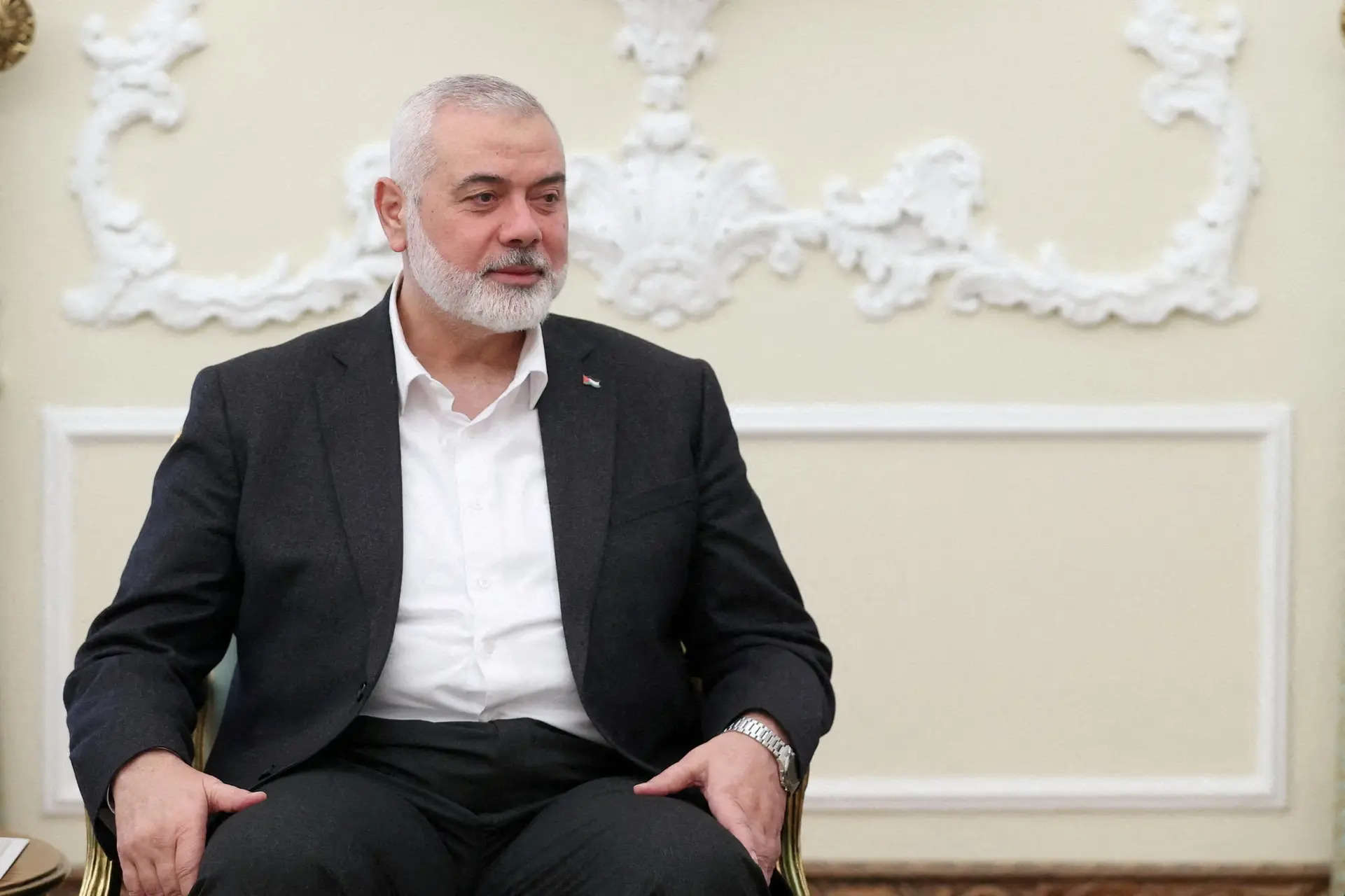[ad_1]
Ismail Haniyeh, a high Hamas chief, was killed in Tehran on Tuesday. Haniyeh, who had been main Hamas’s political operations in exile in Qatar and Turkey, was in Iran with different senior members of the “axis of resistance.” This community primarily consists of Hamas in Gaza, Hezbollah in Lebanon, and the Houthis in Yemen.
Driving the information
Driving the information
- Hamas accused Israel of being liable for the assassination.
- Israel had beforehand threatened to get rid of Haniyeh and different Hamas leaders in response to the group’s assault on Israel on October 7, which resulted in 1,200 deaths and roughly 250 folks being taken hostage.
- Haniyeh had been residing in exile in Qatar since 2019, having left the Gaza Strip.
- Haniyeh was in Tehran to attend the swearing-in ceremony of Iran’s President Masoud Pezeshkian on Tuesday, together with different officers from Hamas, Hezbollah, and allied teams.
- The assassination of Haniyeh follows a uncommon Israeli strike on Beirut, which allegedly killed Fouad Shukur, a high-ranking Hezbollah navy commander.
Why it issues
- As per a NYT report, the selection of Tehran as the positioning for the assassination was important. Haniyeh, the chief of Hamas, has primarily resided in Qatar lately, a nation with which Israel has unofficial relations. All through the continuing battle, Israel has shunned focusing on Hamas leaders inside Qatar’s borders.
- Haniyeh’s dying underscores the numerous position and actions of Iran’s “axis of resistance,” a community of allied militias within the Center East.
- This coalition not solely presents a formidable menace to Israel, US pursuits and its allies but in addition represents a key ingredient in Iran’s technique to increase its affect throughout the area.
What they’re saying
- Hamas mentioned Haniyeh was killed “in a Zionist airstrike on his residence in Tehran after he participated within the inauguration of Iran’s new president.”
- “Hamas declares to the nice Palestinian folks and the folks of the Arab and Islamic nations and all of the free folks of the world, brother chief Ismail Ismail Haniyeh a martyr,” the terse assertion mentioned.
- In one other assertion, the group quoted Haniyeh as saying that the Palestinian trigger has “prices” and “we’re prepared for these prices: martyrdom for the sake of Palestine, and for the sake of God Almighty, and for the sake of the dignity of this nation.”
- Rami Khouri, a distinguished fellow on the American College of Beirut and a non-resident senior fellow on the Arab Heart Washington, mentioned the assassination of Ismail Haniyeh with Al Jazeera.
- Based on Khouri, Israel’s goal in Gaza is to “destroy Hamas as a motion.” Nevertheless, as this purpose proves to be “very troublesome,” they’re now specializing in focusing on the leaders of the group.
What’s the ‘axis of resistance’?
- The ‘axis of resistance’ is a self-proclaimed community of Iran-sponsored organizations and militias throughout the Center East, aimed toward increasing Iranian affect and resisting Western presence, significantly specializing in Israel. This community consists of teams in Iraq, Lebanon, Syria, Yemen, and Gaza, unified by the widespread objectives of countering Western affect and confronting Israel.
Who’re the primary members of the ‘axis of resistance’?
- The primary members of the ‘axis of resistance’ embrace:
- Hamas and Palestinian Islamic Jihad in Gaza.
- Hezbollah in Lebanon.
- Houthis (Ansarallah) in Yemen.
- Numerous Shia militias in Iraq, equivalent to Badr, Kataib Hezbollah, Asaib Ahl al-Haq, and Harakat al-Nujaba.
- Militias in Syria supporting President Bashar al-Assad.
How highly effective is the ‘axis of resistance’?
- The ‘axis of resistance’ has grown more and more highly effective through the years. The community expanded considerably beneath Qassem Suleimani’s management within the late Nineteen Nineties and early 2000s. As an illustration, Hezbollah in Lebanon possesses an arsenal of as much as 150,000 rockets and maintains a big navy drive. The axis has additionally demonstrated its functionality to launch coordinated assaults and affect regional conflicts, posing a considerable menace to US pursuits and allies within the Center East.
How does Iran help these teams?
- Iran helps these teams by funding, coaching, and offering weapons. The US State Division estimated that Iran spent $700 million yearly supporting militias earlier than sanctions hit the nation’s revenues in 2019. The Quds Power performs a big position in coaching these teams, providing navy and strategic help.
How has the ‘axis of resistance’ impacted latest conflicts?
- For the reason that October seventh, 2023 assault by Hamas on Israel, the ‘axis of resistance’ has been energetic on a number of fronts. America has reported at the least 55 assaults on its troops in Syria and Iraq since then, attributed to Iran and its proxies. Iran’s community has engaged in numerous militant actions, supporting Hamas and launching assaults that pose a transparent menace to regional stability.
What are the strategic objectives of the ‘axis of resistance’?
- The first objectives of the ‘axis of resistance’ embrace resisting Western affect within the Center East, confronting Israel, and increasing Iranian geopolitical energy. The community operates by destabilizing opposing governments and supporting allied teams that share its ideological objectives.
What subsequent
- Israel has a long-standing observe of conducting secret focused killings inside Iran’s borders, primarily specializing in people concerned within the nation’s nuclear growth efforts.
- As per a Guardian report, whereas the assassination of Haniyeh offers a blow to Hamas, he was circuitously engaged within the group’s navy actions in Gaza. Furthermore, the group has demonstrated resilience within the face of earlier focused eliminations of its management figures, managing to persevere regardless of such losses.
- Haniyeh’s dying might shift the dynamics inside the ‘axis of resistance’. The community, whereas comprising autonomous teams, nonetheless closely depends on Iranian help for navy coaching, funding, and strategic path. The way forward for the Center East’s stability and energy dynamics will hinge on how Iran and its proxies navigate this management loss and the continuing regional conflicts.
(With inputs from companies)
[ad_2]
Source link



